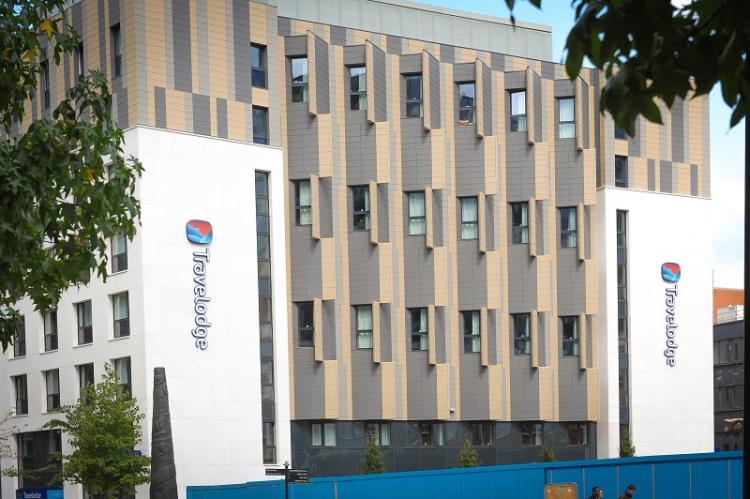Adding Longevity to the Safety Versus Sustainability Debate
It is a fundamental of good design that buildings and structures should be safe and that measures to enhance their environmental performance should not compromise this essential requirement. Here Steve Thompson, Managing Director for specialist steel framing manufacturer EOS, adds longevity and building performance to the safety versus sustainability debate.
Buildings should not only be inherently safe but should also be constructed to last a long time and therefore be inherently sustainable. Buildings are responsible for almost half of the UK’s carbon emissions and around a third of its landfill waste. This means that the UK’s sustainable development targets cannot be met without a major change to the way in which buildings are designed, constructed, and operated. National targets for carbon emission reductions and the drive for buildings that are ‘low carbon’ in operation present a huge challenge to the construction industry – a challenge which the steel construction sector is playing a major part in overcoming.
Manufactured from the most abundant element on earth, steel can be recycled or reused endlessly without detriment to its properties. This unique characteristic gives steel a high value at all stages of its life cycle. The recovery infrastructure for steel recycling is highly developed and extremely efficient and has been in place for decades. Current recovery rates from demolition sites in the UK are 99% for structural steelwork and 96% for all steel construction products – figures that far exceed those for any other construction material.
Steel’s material properties make it the ultimate sustainable construction material both in terms of its longevity, material properties and enhancing the safety credentials of steel-framed buildings.
Its superior strength-to-weight ratio means a little steel goes a long way, giving architects complete flexibility to innovate and create new and exciting buildings. Low and zero carbon buildings and buildings with high BREEAM ratings are readily achievable using steel construction.
An excellent example of this is a project EOS were involved in to create a prestigious £25 million flagship Travelodge hotel in London that was developed as a declaration of renewed confidence in the brand following substantial investment. The aim was to deliver a fully clad offsite manufactured panelised steel frame system, complete with the sub frame of SFS infill panels, pre-fixed to a lightweight innovative stone cladding solution which not only looks outstanding but also achieves a highly energy efficient, non-combustible building envelope. Once delivered, the fully formed panels were craned in and fixed back to the substrate.
The impressive eight storey, 395-room property is built to BREEAM excellent standards and delivered through innovative engineering combined with technically advanced offsite manufacturing. The greater efficiency and quality associated with sustainability is also helping to make this Travelodge more commercially successful. There is growing evidence that BREEAM Excellent buildings provide increased rates of return for hotel operators. BIM Level 2 technology combined with design for manufacture and assembly protocols reduced errors onsite and snagging – as well as enhancing the energy performance throughout the lifecycle of the building.
When the cost of operating a building for 30-years can be four times greater than that of designing and building it, it is no surprise that those who own and maintain buildings are keen to find in-use savings. Now we have more sophisticated research available, the equation of ‘build them high build them cheap’ – simply does not stack up from an owner operator’s perspective. And this is why steel framing systems are favoured by the build-to-rent, education, healthcare and other public sector buildings.
The UK leads the world in steel construction both commercially, technically, and in terms of quality. The industry has made dramatic improvements in technology, productivity and efficiency. According to research carried out by independent consultants Construction Markets – steel continues to be overwhelmingly the structural framing material of choice with their survey showing that steel now has a 72.5% share of the multi-storey office market and a 60.9% share in the ‘other multi-storey buildings’ which includes retail, education, leisure and healthcare sectors.
Quality, safety and sustainability are at the very core of our organisation, it is therefore with great pride that I share that EOS has just successfully completed three quality badge audits with 100% success and zero non-conformances. This is an outstanding achievement and testament to the work that went in to ensuring all procedures, records and management systems were in first-class order providing the auditors with all the necessary information to award EOS total compliance with zero non-conformances. We successfully passed the five-day re-certification audit against ISO 9001:2015 quality management systems, ISO14001:2015 environmental management systems and ISO45001:2018 health and safety management with no non-conformance issues or even any opportunities for improvement or areas of concern. I would like to take this opportunity to publicly thank my team for their hard work and dedication to achieving the ultimate standard.
Partnering Approach
Partnerships are central to our business. We have a wealth of experience and our specialist teams strive to support our clients throughout the design and construction phase. EOS has the capability and capacity to meet the exacting demands of the construction industry and guarantee a very competitive price structure with no hidden costs for deflection heads or transport and we can provide a lump sum total cost which will not alter, providing the specification remains unchanged.
To view EOS video case studies including the Travelodge Hotel and client testimonials click here
To view EOS LSFA Member Profile click here
